Overview
Creating an effective Type 2 diabetes brochure begins with understanding your audience. It's important to incorporate key facts about the condition while using clear language and actionable advice. By tailoring the brochure's content to specific demographics, you can provide practical management tips that not only enhance its impact but also empower individuals to take control of their health. Remember, you're not alone in this journey; we are here to support you every step of the way.
Introduction
Creating an effective diabetes education brochure is about more than just informative content; it requires a strategic approach that truly resonates with those it aims to help. Understanding the unique needs of individuals affected by Type 2 diabetes is essential. This understanding allows us to develop materials that not only educate but also empower. By identifying the right demographics and incorporating actionable advice alongside community resources, we can ensure that each element plays a vital role in crafting a compelling brochure.
In this article, we will explore the essential components of creating impactful diabetes brochures. We will offer insights into:
- Audience analysis
- Research
- Design
- Messaging
- Distribution strategies
These elements can significantly enhance the effectiveness of diabetes education efforts. Remember, you're not alone in this journey; we are here to support you every step of the way.
Identifying Your Audience: Who Needs the Brochure?
Creating an impactful type 2 diabetes brochure begins with understanding your audience. It's crucial to consider demographic factors such as age, gender, socioeconomic status, and their current knowledge about diabetes. For instance, a brochure aimed at newly diagnosed patients should address their specific concerns and questions, which can be quite different from those of healthcare professionals.
At T2DSolutions, we truly understand the importance of tailoring educational materials to meet the unique needs of newly diagnosed patients. Our new resource hub is dedicated to providing comprehensive education on blood sugar management and community support, ensuring that patients have the information they need to manage their condition effectively. You're not alone in this journey; we are here to support you every step of the way.
To gain valuable insights, consider conducting surveys or focus groups to explore the specific needs and preferences of your audience. This foundational step is essential, as it ensures that your brochure resonates with its intended readers, ultimately enhancing its relevance and impact.
Statistics show that the occurrence of undiagnosed blood sugar disorders varies among different demographics, with rates of 1.6% in adults with normal weight, 2.8% in those who are overweight, and 7.9% in individuals with obesity. Understanding these demographics can guide the creation of educational materials that effectively address the concerns of newly diagnosed patients. Moreover, ongoing observation of the prevalence of the condition is vital for understanding trends in identified and unidentified cases among U.S. adults, as specialists emphasize.
Additionally, case studies highlight the significance of preventive measures in diabetes management. Early diagnosis and proper care can greatly reduce complications, underscoring the need for brochures that inform and empower patients. As Lara J. Akinbami, M.D., states, 'Audience analysis is crucial in communication regarding wellness,' reinforcing the necessity of understanding the specific demographics of your target audience.
This approach not only enhances the effectiveness of your materials but also contributes to better health outcomes for those affected. By recognizing the particular demographics of your audience, you can design brochures that not only inform but also foster a sense of community and support among individuals navigating their health journey. We encourage you to explore T2D Solutions for additional information and resources related to managing health conditions.
It's noteworthy that between 2017 and March 2020 and August 2021 to August 2023, no significant differences were observed in the age-adjusted prevalence of total, diagnosed, and undiagnosed conditions, further emphasizing the importance of tailored communication strategies.
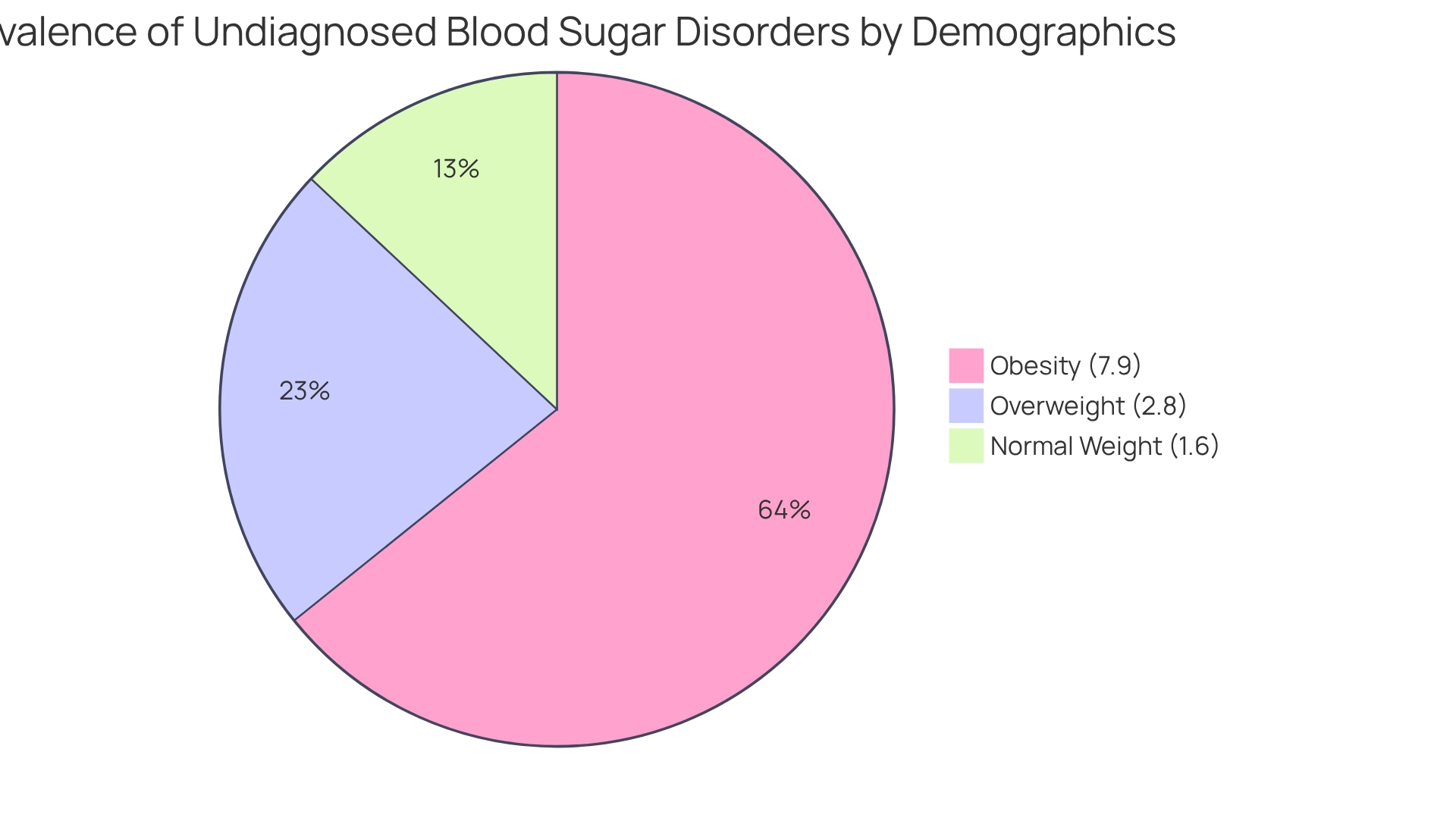
Researching Type 2 Diabetes: Key Facts and Figures
Creating an impactful Type 2 brochure begins with understanding the condition deeply. It’s essential to gather vital facts and figures, such as prevalence rates, risk factors, and potential complications associated with Type 2 diabetes. Relying on trustworthy sources like the CDC, WHO, and similar organizations ensures that the information provided is accurate and current.
As we look toward 2025, it's estimated that over 38 million Americans are living with Type 2 diabetes, and a significant number remain undiagnosed. This reality highlights the urgent need for effective education and awareness campaigns. The prevalence of Type 2 diabetes continues to rise, with key risk factors including obesity, a sedentary lifestyle, and genetic predisposition.
Understanding these factors is crucial for developing educational materials, such as a Type 2 diabetes brochure, that truly resonate with the audience. Incorporating the latest research findings can enhance its credibility. For instance, research indicates that the age-adjusted incidence of diagnosed diabetes among U.S. adults has remained stable over the past twenty years, with a slight decrease in new cases since 2008. This trend suggests improvements in blood sugar management and prevention strategies, which can inspire hope and motivate action among readers.
Moreover, the financial burden of Type 2 diabetes is significant. Excess medical costs per person increased from $10,179 to $12,022 between 2012 and 2022, underscoring the importance of education in managing these expenses. Successful awareness campaigns have effectively used key facts and figures to engage the public. By presenting persuasive information clearly and succinctly, you can enhance the effectiveness of the Type 2 diabetes brochure, transforming it into a valuable resource for individuals seeking to understand and manage their condition.
The American Diabetes Association® is actively seeking support to continue its lifesaving work in research and resource provision, emphasizing the ongoing need for education and awareness in the health community.
Ultimately, the goal is to empower readers with knowledge that can lead to informed decisions about their health and well-being. As noted by Cory Gamble, DO, the contributions of various individuals in blood sugar research are vital, and acknowledging these efforts can lend authority to your message. It’s also important to recognize the broader context of health trends, including the notable rise in Type 1 diabetes among U.S. children and adolescents, which may resonate with your audience.
You're not alone in this journey. We are here to support you every step of the way.
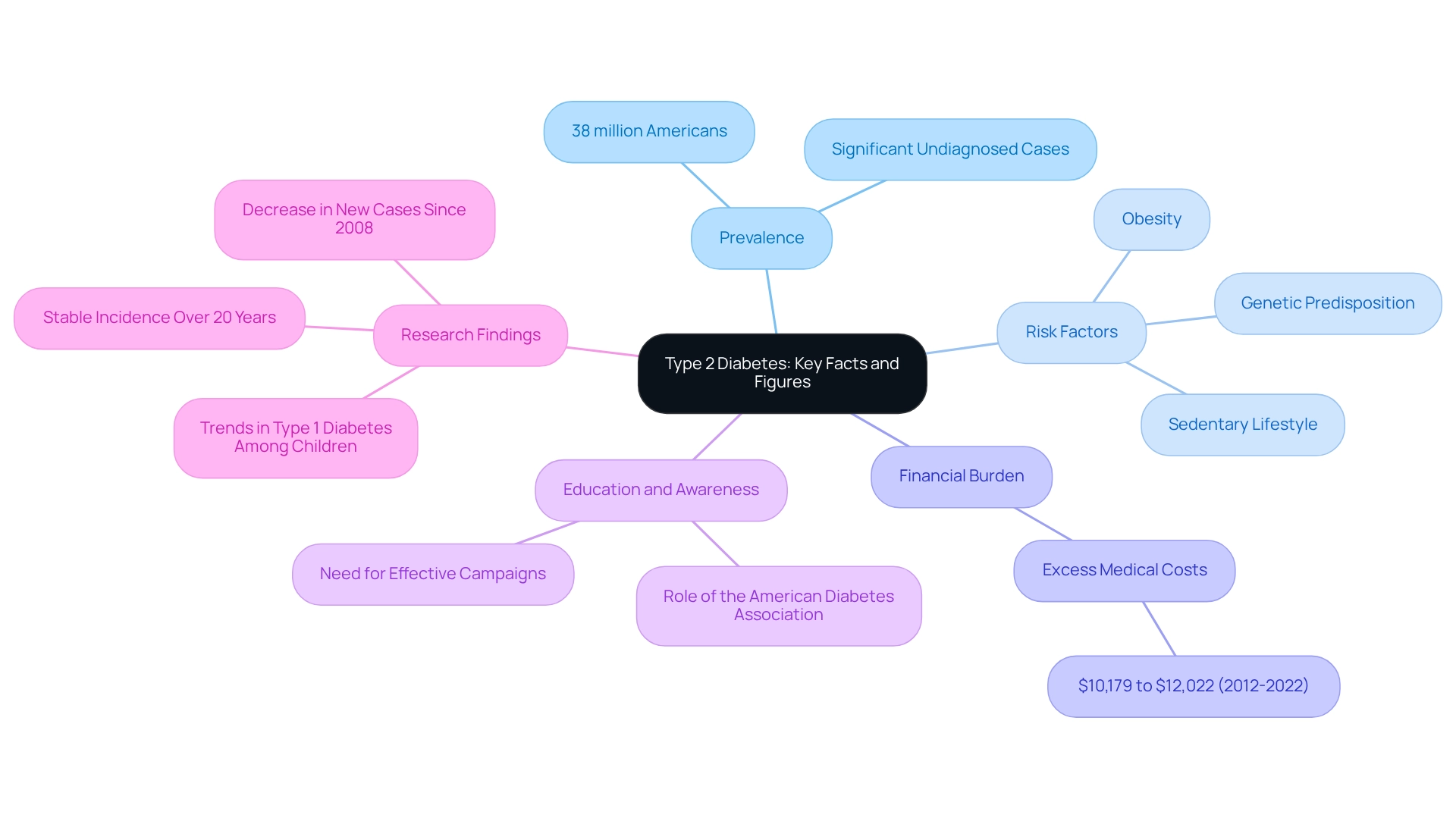
Designing Your Brochure: Layout and Visual Elements
When creating your type 2 diabetes brochure, it’s crucial to pay close attention to the layout and visual elements. Begin with a clean and organized structure that gently guides you through the information. Choose a color scheme that is not only visually appealing but also easy on the eyes, ensuring that the text remains legible against the background.
Integrating images, infographics, or charts can effectively illustrate key points and provide visual breaks in the text, enhancing your overall understanding.
Employing design tools like Canva or Adobe Express can simplify this process. These platforms offer templates specifically designed for wellness materials, helping you create a polished and professional look without requiring extensive design skills.
Statistics reveal that 23% of surrogates believe most patients with chronic critical illness would be able to live independently. This underscores the importance of effective communication in health education materials. The ultimate aim is to create a type 2 diabetes brochure that is both informative and engaging, making it easy for you to navigate and absorb the content. As one family member expressed, "Now, this gives the definitions of all these words? When you have something that gives you the definitions like in school, you have a real sense of what it is. So if this gives you the definitions…this would be very helpful." This highlights the need for clarity and comprehension in informational materials.
Furthermore, insights from the case study titled "Themes Identified by Family Members Regarding Evaluation of Materials" revealed that respondents valued the educational content and clarity of the materials. They suggested enhancements in delivery methods and the inclusion of local resources for family support. By prioritizing effective layout strategies and visual communication, you can create a type 2 diabetes brochure that not only educates but also resonates with those managing blood sugar-related health conditions. Remember, T2DSolutions acts as a valuable resource center, offering guidance and support for developing effective education resources. We are here to ensure that your type 2 diabetes brochures are not only informative but also aligned with best practices in management.
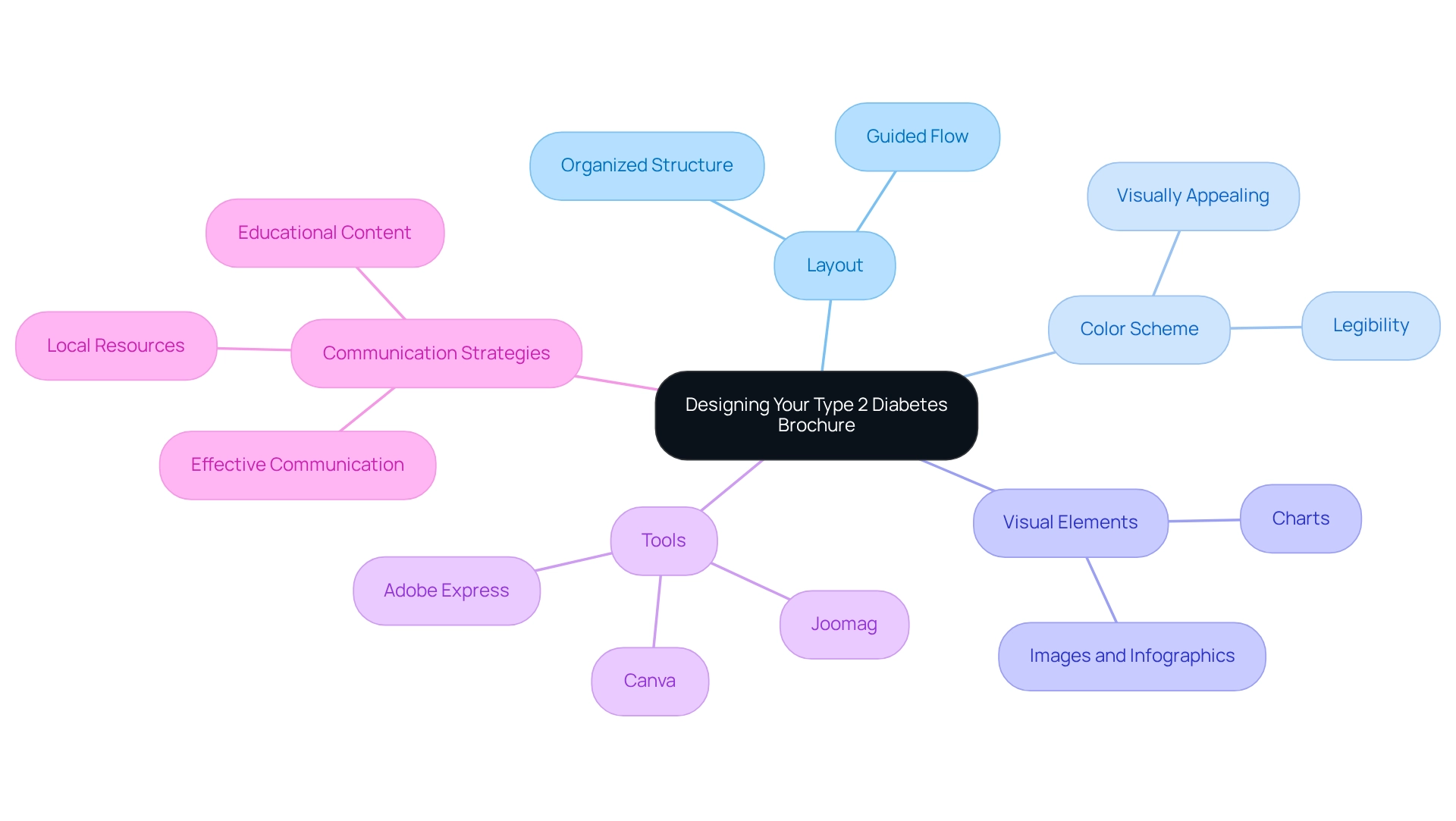
Crafting Clear Messages: Language and Tone
Creating communications with clear, straightforward language is crucial for effective education resources, such as a type 2 diabetes brochure. It's important to avoid medical jargon; instead of terms like 'hyperglycemia,' opt for simpler phrases such as 'high blood sugar.' This approach not only aids comprehension but also builds trust between patients and healthcare providers. Clear communication fosters an environment where individuals feel confident to seek clarifications and express concerns.
As noted by Author, "The use of plain language instills trust between patients and healthcare providers, creating an environment where individuals feel confident in seeking clarifications and voicing their concerns."
At T2DSolutions, we are committed to maintaining a friendly and supportive tone throughout our diabetes education materials. We encourage readers to engage with the content. Utilizing bullet points and short paragraphs enhances readability, making the information more digestible. Research shows that individuals with restricted wellness understanding are significantly more prone to report poor well-being results. For example:
- 41% of those with limited English proficiency indicate poor condition
- 22% of those with restricted wellness literacy
This emphasizes the necessity of accessible language in medical communication.
For instance, case studies have shown that when healthcare providers use plain language, patients feel more empowered to participate in shared decision-making processes regarding their care. The case study titled 'Engaging Patients in Decision-Making' illustrates this point, demonstrating that using plain language fosters a sense of ownership over wellness management. This ownership is vital for effective control of blood sugar. By simplifying medical terminology and focusing on clear communication, the type 2 diabetes brochure provided by T2D Solutions can significantly enhance patient comprehension and involvement, ultimately resulting in improved health outcomes.
Furthermore, the globalization of healthcare presents both challenges and opportunities for improving communication standards. This emphasizes the need for ethical responsibilities in medical education.
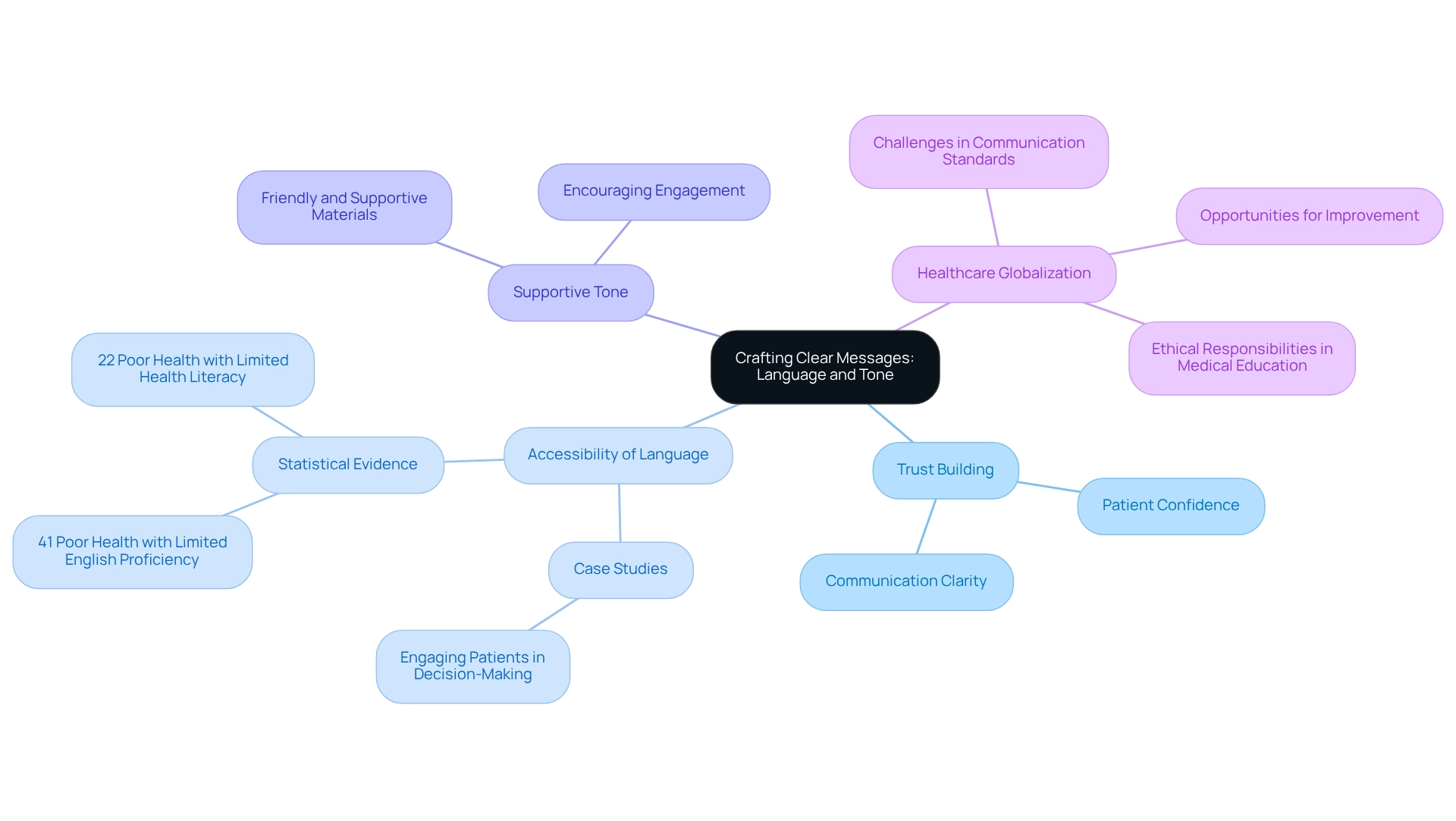
Incorporating Actionable Advice: Tips for Diabetes Management
Integrating practical suggestions into your type 2 diabetes brochure is crucial for helping readers manage their condition effectively. Start by including practical tips on healthy eating, physical activity, and blood sugar monitoring. For instance, recommending a balanced diet that emphasizes whole grains, fruits, and vegetables can be vital for maintaining stable blood sugar levels.
Nutritionists suggest that individuals with blood sugar issues focus on meals low in saturated fats and high in fiber. These dietary choices can significantly impact overall health.
With global cases of this condition having increased four-fold over the past decades, promoting regular physical activity becomes essential. Research indicates that 31.9% of adults with this condition are physically inactive, highlighting the urgent need for exercise as part of management strategies. Aim for at least 150 minutes of moderate-intensity aerobic exercise each week; this can enhance insulin sensitivity and support heart health.
Additionally, consider offering resources for meal planning and local support groups. These can foster community involvement and shared knowledge. As highlighted by T2DSolutions, collaboration and support are crucial for effective management of the condition. By providing these practical strategies in the type 2 diabetes brochure, you not only equip readers with the tools they need but also create a sense of connection and support that is essential for their journey.
This comprehensive approach can lead to improved health outcomes and a better quality of life for those navigating the complexities of managing their condition. Importantly, this research received no external funding, underscoring the credibility of the information shared.

Connecting with Resources: Support and Community Engagement
Incorporate a dedicated section in your brochure that connects readers with vital resources and support networks. It's important to include listings of local support groups for individuals with health conditions, educational programs, and online communities where people can share their experiences and seek advice. Emphasize trustworthy entities like the American Diabetes Association and local wellness departments, which offer informative resources and assistance services customized for managing blood sugar levels.
Studies reveal that community involvement is essential in managing this condition. Research demonstrates notable enhancements in glycemic control among individuals who obtained peer support combined with self-management education. For instance, a subgroup analysis based on baseline HbA1c levels indicated a larger effect size in studies where participants had a baseline HbA1c level of less than 8.5% (-0.42) compared to those with levels of 8.5% or more (-0.36), with both groups showing statistical significance. Furthermore, statistical evaluations have shown that individuals participating in support groups experienced a standardized mean difference (SMD) in glycemic control, highlighting the effectiveness of these interventions.
By cultivating connections through these resources, you enable readers to feel less isolated and more assured in their condition management journey. The significance of community support is reiterated by advocacy organizations, which stress that collective knowledge and experiences can lead to improved health outcomes. As we look to 2025, various resources are accessible to foster these connections, guaranteeing that individuals have access to the assistance they require to thrive.
Motivating readers to interact with these networks not only improves their comprehension of the condition but also fosters a sense of community and strength—vital elements in handling this persistent illness. As Prashant Yamajala observed, 'KU and PY offered editing and feedback and examined the final manuscript,' emphasizing the collaborative aspect of managing the condition. Additionally, the heterogeneity statistic (I = 11%, p=0.320) provides further context regarding the variability of study results, reinforcing the robustness of the findings related to peer support interventions.

Reviewing and Refining: Getting Feedback on Your Brochure
Creating an impactful type 2 diabetes brochure is an essential part of T2D Solutions' mission to provide comprehensive diabetes education. To truly connect with individuals on this journey, gathering feedback from a diverse group of stakeholders—including healthcare professionals, diabetes educators, and potential readers—is crucial. Engaging these individuals in the review process allows for a thorough evaluation of the content's clarity, accuracy, and relevance. By utilizing structured methods such as surveys or focus groups, we can ensure that the insights we gather are both actionable and specific.
Research shows that patients are 22% more inclined to give feedback when directly asked. This highlights the importance of proactive involvement in creating health communication resources. As Cynthia Anaba wisely notes, "Effective communication is key to ensuring that educational materials meet the needs of patients and their families." Embracing constructive criticism is vital; it enables us to refine our materials effectively, enhancing their overall impact.
This iterative process not only improves the quality of the final product but also ensures that it resonates with the needs and preferences of our audience.
Moreover, we cannot overstate the importance of peer review in crafting type 2 diabetes brochures. Involving specialists in the field can provide essential perspectives that enhance the educational value of our content. For instance, comparative data analysis in patient experience has shown that organizations that benchmark their resources against similar entities can identify performance trends and areas for improvement. This ultimately guides enhancements in patient care quality.
A recent study found that nearly 50% of patient care process-related complaints were made against specific staff, primarily doctors. This underscores the necessity of effective communication and feedback mechanisms in healthcare settings.
Statistics reveal that dedicating just 10 minutes weekly to enhancing your online presence and responding to feedback can significantly reduce the impact of negative reviews, cutting them by as much as 70%. This emphasizes the importance of continuous communication with your audience, guiding future updates and ensuring that our educational resources remain relevant and effective.
In summary, the iterative design process, supported by expert feedback strategies, is vital for developing an effective type 2 diabetes brochure. By continuously reviewing and refining educational materials based on user feedback, T2 Solutions can create resources that not only educate but also empower individuals managing Type 2 Diabetes. Remember, you're not alone in this journey; we are here to support you every step of the way.
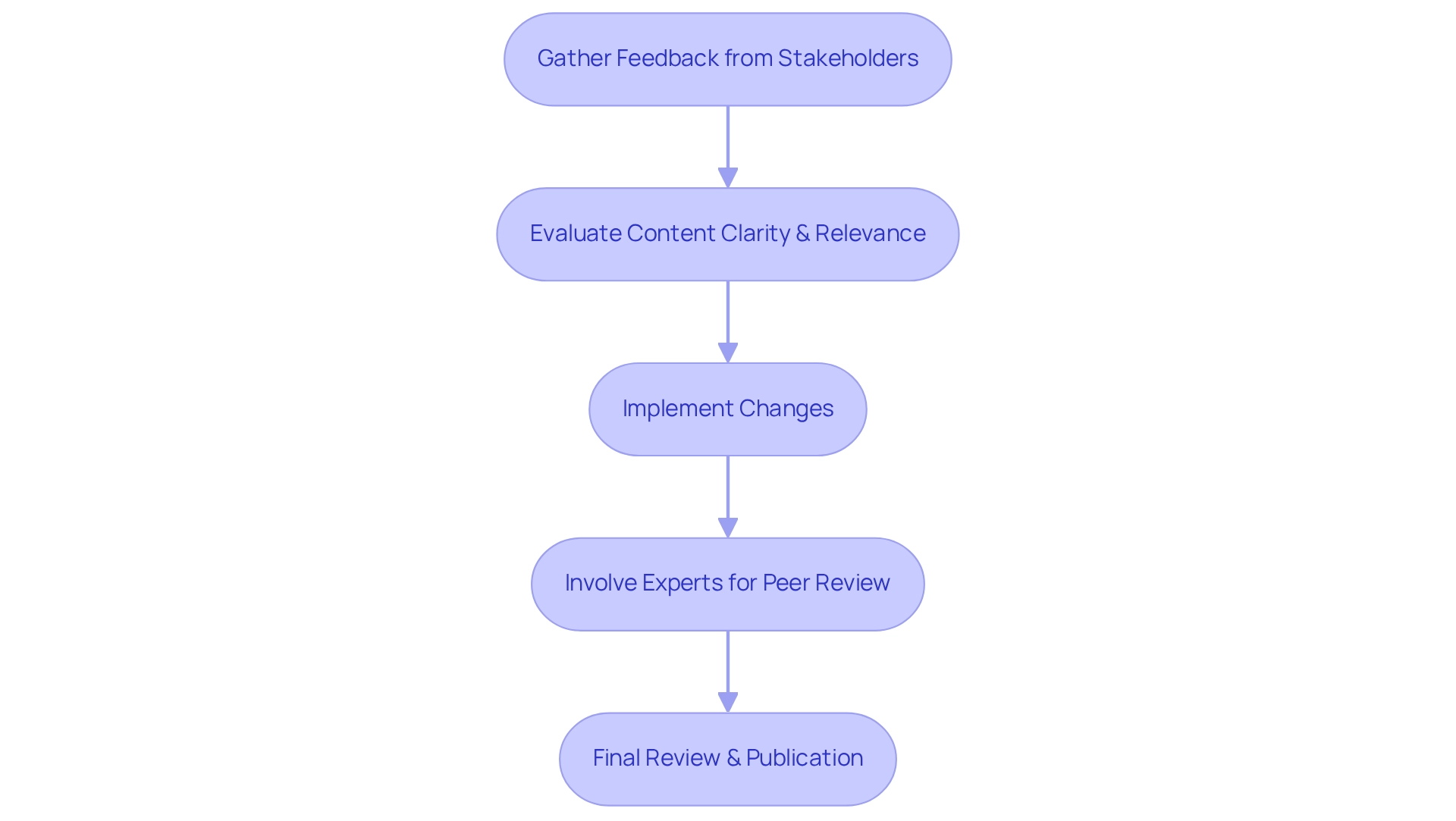
Distributing Your Brochure: Strategies for Maximum Reach
To effectively maximize the reach of your health informational material through T2DSolutions, it's important to develop a strategic distribution plan that truly connects with those in need. Begin by placing printed materials in busy locations such as:
- Medical facilities
- Community centers
- Libraries
- Local businesses
These are places where individuals seeking wellness information are likely to visit. Additionally, utilizing social media platforms can significantly enhance visibility; sharing digital copies of your promotional material on these platforms allows for broader distribution and meaningful interaction.
Consider launching targeted email campaigns aimed at individuals at risk for high blood sugar, providing them with valuable resources directly in their inboxes. Participating in wellness fairs and community gatherings offers a unique opportunity to share information face-to-face, fostering personal relationships and encouraging immediate conversations about managing blood sugar. You're not alone in this journey; these interactions can make a real difference.
A multi-channel strategy not only broadens your audience but also reinforces your message through various touchpoints. For instance, a recent study found that 75% of patients rely on online reviews as the first step in finding a new doctor or healthcare provider. This highlights the importance of digital outreach in today's world. Collaborating with health organizations can further enhance the dissemination of quality reports and promotional materials, ensuring that your message reaches those who need it most.
Moreover, a case study on guideline adherence in depression treatment demonstrated the effectiveness of sending educational materials to healthcare providers. This approach can be similarly applied to distributing informational pamphlets related to blood sugar management. By blending traditional methods with innovative digital strategies, you can ensure that your brochure reaches a diverse audience, ultimately making a meaningful impact on diabetes awareness and management through T2DSolutions. Remember, we are here to support you every step of the way.

Conclusion
Creating an impactful diabetes education brochure is a journey that requires understanding and compassion. By focusing on the needs of individuals affected by Type 2 diabetes, we can craft messages that truly resonate with their unique concerns. This approach empowers them with the knowledge they need to manage their condition effectively.
Incorporating reliable research and a visually appealing design is crucial. It enhances the credibility of the information presented, making it accessible to everyone. Practical advice on diabetes management, paired with community resources, fosters a sense of support and connection for those navigating their health journeys. Engaging with diverse stakeholders for feedback ensures that the brochure remains relevant and effective, highlighting the importance of continuous improvement in health communication materials.
Ultimately, our goal is to create a resource that not only educates but also inspires action and community engagement. By implementing strategic distribution methods, we can maximize the reach of the brochure, ensuring that vital information about diabetes management is accessible to those who need it most. This holistic approach can lead to better health outcomes, a stronger sense of community, and a more informed public. Remember, you're not alone in this journey; we are here to support you every step of the way.
Frequently Asked Questions
Why is understanding the audience important when creating a Type 2 diabetes brochure?
Understanding the audience is crucial because it allows the brochure to address specific concerns and questions relevant to different groups, such as newly diagnosed patients versus healthcare professionals. Tailoring the content ensures that it resonates with the intended readers.
What demographic factors should be considered when creating a diabetes brochure?
Key demographic factors include age, gender, socioeconomic status, and the audience's current knowledge about diabetes. This information helps tailor the educational materials to meet the unique needs of the target audience.
How can insights into audience needs be gathered?
Valuable insights can be gained by conducting surveys or focus groups to explore the specific needs and preferences of the audience. This foundational step enhances the relevance and impact of the brochure.
What statistics are relevant to understanding Type 2 diabetes prevalence among different demographics?
Statistics indicate that undiagnosed blood sugar disorders occur at rates of 1.6% in adults with normal weight, 2.8% in those who are overweight, and 7.9% in individuals with obesity. Understanding these demographics aids in creating effective educational materials.
What role do case studies play in diabetes management?
Case studies highlight the significance of preventive measures in diabetes management, showing that early diagnosis and proper care can greatly reduce complications. This underscores the need for informative brochures that empower patients.
What should be included in a Type 2 diabetes brochure to make it impactful?
An impactful brochure should include vital facts and figures about Type 2 diabetes, such as prevalence rates, risk factors, and potential complications. Relying on trustworthy sources ensures the information is accurate and current.
What are the key risk factors associated with Type 2 diabetes?
Key risk factors for Type 2 diabetes include obesity, a sedentary lifestyle, and genetic predisposition.
How has the financial burden of Type 2 diabetes changed over time?
The excess medical costs per person for Type 2 diabetes increased from $10,179 in 2012 to $12,022 in 2022, highlighting the importance of education in managing these expenses.
What is the goal of creating educational materials about Type 2 diabetes?
The goal is to empower readers with knowledge that can lead to informed decisions about their health and well-being, ultimately improving health outcomes for those affected by diabetes.
How can the contributions of individuals in blood sugar research enhance the credibility of the brochure?
Acknowledging the contributions of various individuals in blood sugar research lends authority to the message, reinforcing the importance of the information presented in the brochure.
